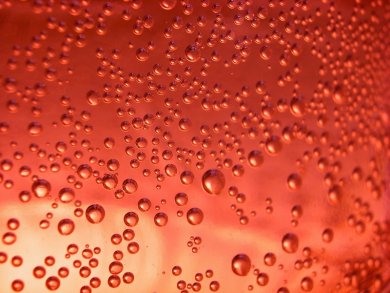Superhydrophobic surfaces, such as the leaves of the lotus plant, have a hydrophobic surface with micro- or nanoscale roughness which traps air. The air reduces the effective contact area between the liquid and the solid, making the surface extremely difficult to wet. A major hurdle for the practical use of superhydrophobic surfaces is that high-pressure-driven flows destabilize and collapse the lubricating air layer.
Carl Fredrik Carlborg and Wouter van der Wijngaart, KTH – Royal Institute of Technology, Sweden, have designed a superhydrophobic channel that automatically adjusts the gas pressure in the air layer in response to the local liquid pressure in the channel. The liquid in the microchannel is pneumatically connected to the gas-pockets trapped at the channel wall through a pressure feedback channel. When liquid enters the feedback channel, it compresses the air and increases the pressure in the gas-pocket.
This method can sustain three times the liquid pressure of previous systems before collapsing and could reduce near-wall laminar friction in both micro and macro scale flows.
- Sustained Superhydrophobic Friction Reduction at High Liquid Pressures and Large Flows
C. F. Carlborg, W. van der Wijngaart,
Langmuir 2010.
DOI: 10.1021/la103624d




